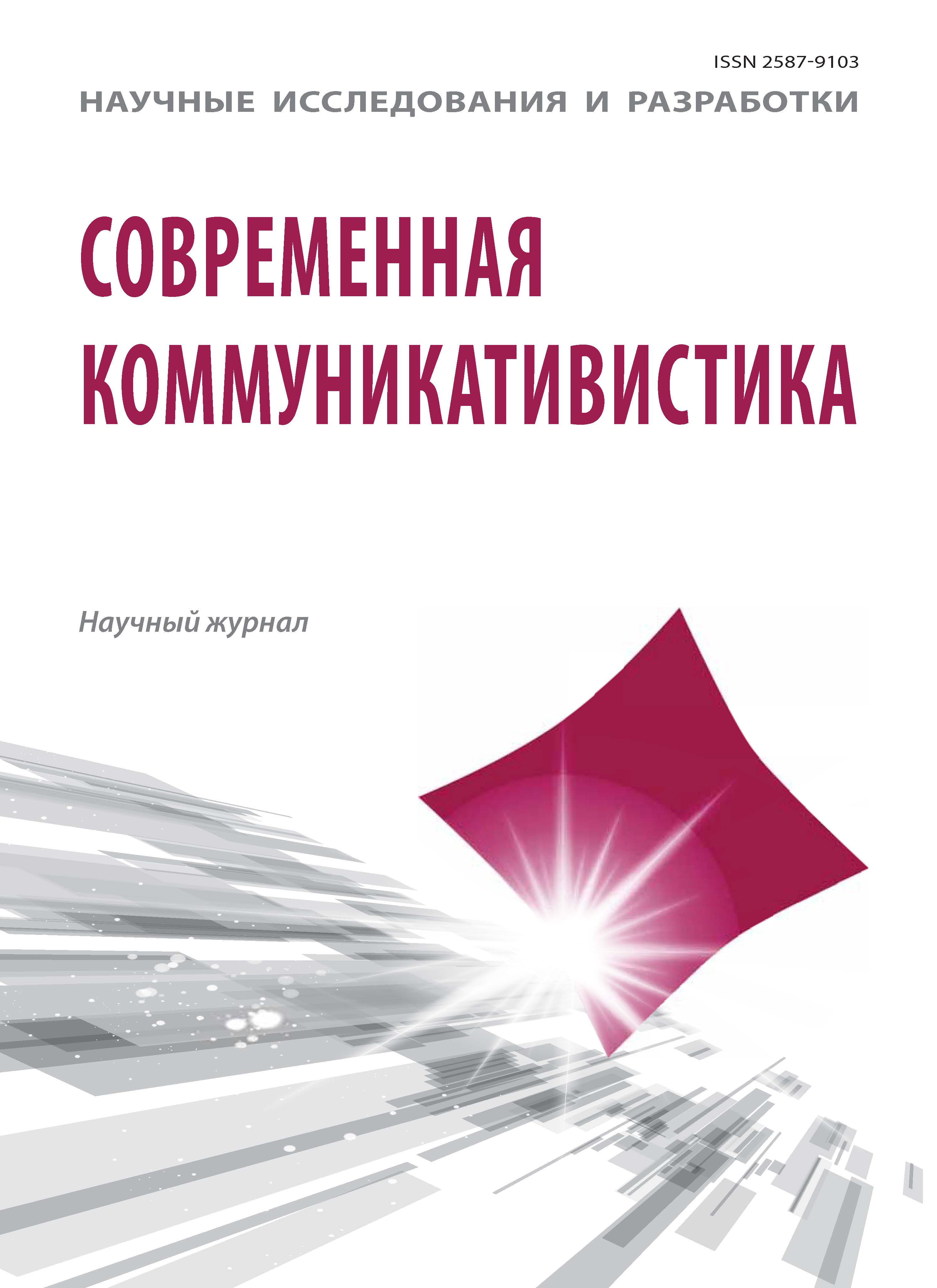The article deals with the potential application of information and communication technologies in modern higher professional education, which serve as a continuous source of creation and implementation of innovations in the educational process and teaching foreign languages. The author of the article describes the didactic functions and methodological potential of educational technologies as a tool for the development of students’ professional competencies, the forms of their use and methods of effective implementation in teaching foreign languages in the process of professional training of IR (International Relations) students. The article analyses various approaches to the use of information and communication technologies in the process of teaching foreign languages and highlights the advantages and disadvantages of their use. The examples of the application of these technologies in teaching foreign languages of IR specialists, which help to enrich and diversify the educational process, are given.
education; information and communication technologies; foreign languages; professional competencies
1. Aynutdinova I.N. Innovacionnye tehnologii v obuchenii inostrannym yazykam v vuze: integraciya professional'noy i inoyazychnoy podgotovki konkurentosposobnogo specialista: (zarubezhnyy i rossiyskiy opyt)/ Nastol'naya kniga pedagoga-novatora. - Kazan', Izdatel'stvo Kazanskogo universiteta, 2011 - s. 456
2. Goroshko E.I., Samoylenko S.A. Tvitter kak razgovor cherez kontekst: ot Obrazovaniya 2.0 k Obrazovaniyu 3.0?, 2011. - S. 502-530. [Elektronnyy resurs]. URL: https://cyberleninka.ru/article/n/tvitter-kak-razgovor-cherez-kontekst-ot-obrazovaniya-2-0-k-obrazovaniyu-3-0 (data obrascheniya: 21.04.2020).
3. Evstigneev M.N. Metodika formirovaniya kompetentnosti uchitelya inostrannogo yazyka v oblasti ispol'zovaniya informacionnyh i kommunikacionnyh tehnologiy : diss. ... k. ped. n. - Tambov, 2012. - 158 s.
4. Krasnova T.I. Modelirovanie asinhronnogo obucheniya / T. I. Krasnova. - Tekst: neposredstvennyy, elektronnyy // Molodoy uchenyy., 2015. - № 11 (91). - S. 1371-1373. [Elektronnyy resurs]. URL: https://moluch.ru/archive/91/19652/ (data obrascheniya: 18.04.2020).
5. Markova Yu.Yu. Metodika razvitiya umeniy pis'mennoy rechi studentov na osnove viki-tehnologii: angliyskiy yazyk, yazykovoy vuz : diss. ... k. ped. n. - Tambov, 2011. - 187 s.
6. Pavel'eva T.Yu. Metodika razvitiya umeniy pis'mennoy rechi sredstvami social'nogo servisa blogov: avtoref. diss. … k. ped. n. - Krasnoyarsk, 2013. - 25 s.
7. Polat E.S. Novye pedagogicheskie i informacionnye tehnologii v sisteme obrazovaniya: uchebnoe posobie dlya studentov ped. vuzov i sistemy povysheniya kvalifikacii pedagogicheskih kadrov / E. S. Polat [i dr.] ; red. E. S. Polat. - M. : Akademiya, 2002. - 272 s.
8. Sysoev P.V. Informacionnye i kommunikacionnye tehnologi v lingvisticheskom obrazovanii: Uchebnoe posobie. - M.; Knizhnyy dom “Librokom”, 2013. - 264 s.
9. Titova S.V. Vidy elektronnoy svyazi i ih didakticheskie vozmozhnosti. // Vestnik Moskovskogo universiteta. Seriya 19: Lingvistika i mezhkul'turnaya kommunikaciya, izdatel'stvo Izd-vo Mosk. un-ta (M.)., 2010 - ,№ 3 - s. 37-54
10. Filatova A. V. Optimizaciya prepodavaniya inostrannyh yazykov posredstvom blog-tehnologiy (dlya studentov yazykovyh special'nostey vuzov): avtoref. diss. … k. ped. n. - M., 2009. - 23 s.
11. Anderson T. Distance learning - social software's killer application?, 2005. [Elektronnyy resurs]. URL: https://www.researchgate.net/publication/239549918_Distance_learning_Social_software's_killer_ap// (data obrascheniya: 24.04.2020).
12. Barrett T. Twitter a teaching and learning tool // ICT in My Classroom, 2008. [Elektronnyy resurs]. URL: https://edte.ch/blog/2008/03/29/twitter-a-teaching-and-learning-tool/ (data obrascheniya: 20.04.2010).
13. Block J. Abdullah's Blogging: A Generation 1.5 student enters the blogosphere // Language Learning and Technology, 2007, vol.11, №2, p.25-37.
14. Ebner, M., Lienhardt, C., Rohs, M., & Meyer, I. (2010). Microblogs in Higher Education-A chance to facilitate informal and process-oriented learning?. Computers & Education, 55(1), 92-100.
15. Grosseck G., Holotescu C. Can we use Twitter for educational activities? // The 4th International Scientific Conference eLSE "eLearning and Software for Education", Bucharest, April 17-18, 2008. [Elektronnyy resurs]. URL: http://portaldoprofessor.mec.gov.br/storage/materiais/0000012008.pdf (data obrascheniya: 19.04.2020).
16. Herring S.., Honeycutt C. Beyond microblogging: Conversation and collaboration via Twitter. Proceedings of the Forty-Second Hawai'i International Conference on System Sciences (HICSS-42). Los Alamitos, CA: IEEE Press, 2009. [Elektronnyy resurs] URL: http://ella.slis.indiana.edu/~herring/honeycutt.herring.2009.pdf (data obrascheniya: 15.04.2020).
17. Kaplan A., Haenlein M. The early bird catches the news: Nine things you should know about micro-blogging // Business Horizons 54(2):105-113, March 2011. [Elektronnyy resurs] URL: https://www.researchgate.net/publication/223080854 (data obrascheniya: 22.04.2020).
18. Kennedy K. Writing with Web Logs// Technology & Learning. 2003, №2, Pp. 29- 35.
19. Lowe C., Williams T. Into the Blogosphere: Moving to the Public: Weblogs in the writing classroom. 2006. 109 p.
20. Leslie, S. and Landon, B. Social Software for Learning: What is it, Why Use it? The Observatory of Borderless Higher Education Report. Retrieved online on November 12, 2008, [Elektronnyy resurs] URL: http://www.obhe.ac.uk/products/reports/pdf/2008-01-01.pdf (data obrascheniya: 7.02.2020).
21. Rooney J., Schumann A. 50 Ways to Use Twitter in the College Classroom // Online colleges. June 8, 2009. [Elektronnyy resurs] URL: http://www.onlinecolleges.net/2009/06/08/50-ways-to-use-twitter-in-the-college-classroom (data obrascheniya: 22.01.2020).







